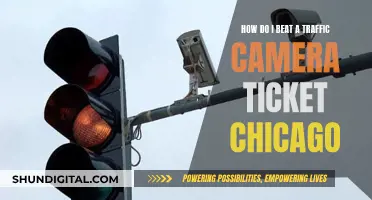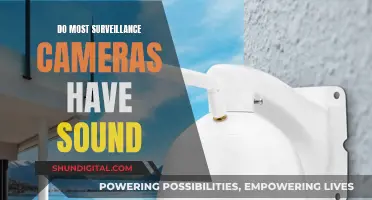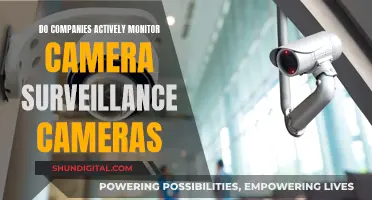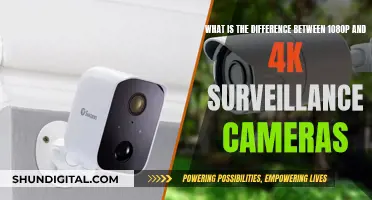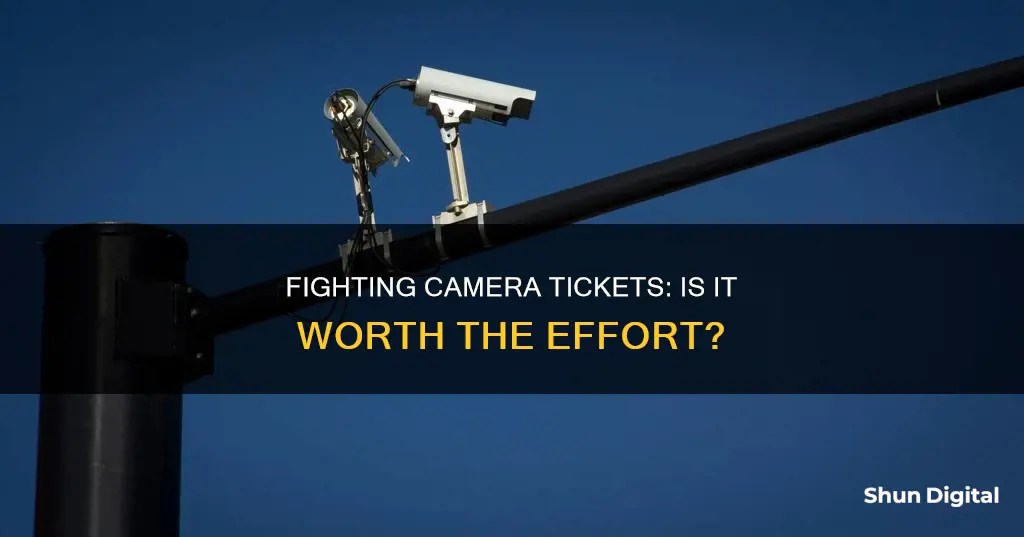
Fighting a camera ticket can be a complex and time-consuming process, but it is not impossible. The first step is to examine the ticket and the associated paperwork, checking for any inaccuracies or signs of fraud. It is also important to understand the process, as an arraignment is not a court hearing but an opportunity to enter a plea of guilty, not guilty, or guilty with explanation. When entering a plea of not guilty, a date for a court hearing will be set. Before the hearing, it is advisable to request production of all evidence against you, including photographs and witness statements. This evidence can then be scrutinised for any discrepancies or signs that legal requirements were not met, such as inadequate signage at the location of the violation. During the court hearing, individuals should be prepared to describe the event, present their evidence, and assert their claim for dismissal. It is worth noting that penalties for camera-issued tickets may be less severe than traditional tickets issued by an officer, with lower fines and no demerit points in some states.
| Characteristics | Values |
|---|---|
| Ticket Examination | Check the date, time, and location of the ticket. |
| Ensure you were driving the car when the ticket was issued. | |
| Pleading Not Guilty | Plead by mail, online, or in person. |
| Arraignment | Appear at the arraignment and request a formal hearing. |
| Research Applicable Law | Research cases in your city or county about traffic cameras and check for any appellate court decisions. |
| Production of Documents | Request production of documents from the police department or law enforcement agency in charge of the camera. |
| Evidence | Check if the photos are clear and show you driving. |
| Admissibility of Photographs | Challenge the admissibility of the photograph as hearsay. |
| Confrontation of Witnesses | Assert your right to confront witnesses. |
| Authenticity of Photographs | Dispute the authenticity of the photograph. |
| Lack of Evidence | Attack the lack of evidence. |
What You'll Learn
- Check the ticket details: confirm the date, time, location, and your identity as the driver
- Plead not guilty: respond by mail, online, or in-person, and request a formal hearing
- Research the law: understand local regulations and potential defences, such as signage requirements
- Request evidence: ask for photos, videos, and maintenance records of the camera system
- Prepare a defence: note discrepancies, gather evidence, and develop a clear argument for dismissal

Check the ticket details: confirm the date, time, location, and your identity as the driver
When you receive a camera ticket in the mail, it is important to carefully check all the details on the ticket. This includes confirming the date, time, and location of the alleged traffic violation. It is also crucial to verify your identity as the driver of the vehicle in question. Here are some detailed steps to help you through this process:
- Check the date and time: Confirm that the date and time recorded on the ticket match the date and time when the alleged traffic violation occurred. This verification is essential because it will help determine if you were indeed driving the vehicle at that specific date and time.
- Verify the location: Ensure that the location mentioned on the ticket is accurate. This confirmation will help you cross-reference the details and reconstruct the scene if needed.
- Identify yourself as the driver: Since camera tickets are typically sent to the owner of the vehicle, it is important to establish if you were the one driving at the time of the violation. If someone else borrowed your car, you may not be held liable. However, some states, like New York, treat red-light camera tickets as parking violations, holding the registered owner responsible. Therefore, understanding the specific laws in your jurisdiction is crucial.
- Reconstruct the scene: Try to recall what you were doing and any relevant details about the incident. For instance, you may have been making a legal right turn on a red light when the camera captured the photo. Such information can be crucial in building your defence.
- Review the photos: If your notification includes photos, carefully examine them to confirm that they depict your vehicle clearly. Blurry photos or those without a clear view of your license plate may be challenging to use as evidence.
By meticulously checking these details, you can gain a better understanding of the situation and decide on the best course of action to take regarding your camera ticket.
History of Brownie Hawkeye Camera: When Was It Made?
You may want to see also

Plead not guilty: respond by mail, online, or in-person, and request a formal hearing
If you want to fight a camera ticket, you must plead not guilty. This can be done by mail, online, or in person. The process for disputing a traffic ticket varies depending on the state and whether the ticket was issued by a local traffic court or a New York Traffic Violations Bureau (TVB) office.
In New York, for example, if the ticket was issued by one of the five bureaus of New York City, the case must be handled by a TVB officer. On the other hand, if the ticket was issued outside of New York City, the case will be heard by a court with jurisdiction in the county where the alleged offence took place.
Regardless of the location, the first step in resolving a traffic ticket is to respond to the citation by entering a plea with the court or TVB office. This must be done by the deadline stated on the ticket, which is typically within 30 days of receiving the citation. Failing to respond by the deadline can result in adverse consequences such as referral to a debt collection agency or driver's license suspension or revocation.
When pleading not guilty, it is important to carefully review the ticket and all associated paperwork to ensure the information is accurate and complete. This includes confirming that the name and address on the ticket are correct. Contacting the agency that issued the ticket, such as the highway patrol or local police department, can also help verify the authenticity of the ticket.
In some states, such as New York, red-light camera tickets are treated like parking violations, holding the registered owner of the vehicle liable rather than the driver. Therefore, it is crucial to check the red-light law in the jurisdiction where the ticket was issued. If someone else was driving the vehicle, this information should be noted as it may be grounds for dismissal of the ticket.
To initiate the dispute process, a "request for production" or "discovery request" must be submitted to the prosecutor. This requires the prosecutor to provide a list of the evidence that will be used against the defendant in court, including photographs, witness statements, etc. Serving this request establishes a legal date of receipt, and if the prosecutor fails to respond within the allotted time frame, it may be grounds for dismissal of the case.
Throughout the process, it is essential to keep proper records and save all relevant paperwork, including copies of written requests, filing paperwork, and evidence received. These documents can be crucial in supporting the defendant's case and justifying their actions.
After reviewing the evidence presented by the prosecutor, the defendant should prepare explanations for each piece of evidence and note any discrepancies or extenuating circumstances that may strengthen their case. This includes examining the photographs to ensure they are clear and identifiable, as blurry or unclear images may be grounds for dismissal. Additionally, the defendant should visit the scene of the alleged violation to take detailed notes, including timing the traffic light as it transitions from yellow to red, as this information can be used to argue that there was insufficient time to safely bring the vehicle to a stop.
Once the defendant has gathered their evidence and prepared their arguments, they must appear in court on the scheduled hearing date. It is recommended to arrive early and be prepared to spend the entire day at the courthouse. During the hearing, the defendant will have the opportunity to present their case, including providing a detailed account of the event, addressing discrepancies, and asserting their claim for dismissal. The prosecutor will also present their case, after which both parties may provide closing statements.
It is important to note that fighting a camera ticket may require multiple court appearances and a thorough understanding of the applicable laws and regulations. Seeking legal assistance can be helpful in navigating the process and ensuring the best possible outcome.
Choosing the Right Batteries for Your Action Camera
You may want to see also

Research the law: understand local regulations and potential defences, such as signage requirements
When it comes to camera tickets, the specific regulations vary depending on your location. In the US, each state has its own traffic laws, and while running a red light or stop sign is illegal everywhere, the use of cameras to enforce traffic signals and speed limits is not uniformly permitted. Some states ban automated traffic cameras altogether, while others allow them with certain restrictions. For example, in California, red light cameras are permitted, while speed camera programs are only allowed in some cities and began in 2024. On the other hand, Texas prohibits red light and speeding traffic enforcement cameras.
It's important to understand the local regulations in your area, as they can provide potential defences if you're challenging a camera ticket. For instance, some states require signage to inform motorists about red light safety cameras at intersections, specifying the content and location of the signs. If you receive a ticket where the signage doesn't meet the legal requirements, this could be grounds for dismissal. Similarly, some states have specific requirements for the placement of speed cameras, such as only allowing them near schools and work zones. If a camera is installed in a location that violates these regulations, the resulting photo evidence may not be enforceable.
In addition to signage requirements, there are other potential defences to consider. For example, you can verify the evidence by carefully examining the photos and videos for clarity and accuracy. If the images are blurred or don't clearly show the license plate, this could lead to a dismissal. You can also investigate technical requirements, such as the timing of the lights, and check if the camera was properly calibrated and maintained. If there are any discrepancies or malfunctions, it may weaken the validity of the ticket.
Another possible strategy is to confirm your identity. If you weren't the one driving the vehicle when the violation occurred, you may be able to challenge the ticket with an affidavit and supporting documentation. It's worth noting that the process of issuing a red light camera citation usually involves a manual element, where a law enforcement official reviews the video and photographs to determine if a ticket is necessary. This means that receiving a citation is not always certain, even if a red light camera flashes.
The Chevrolet Camaro: Engineering a Muscle Car Legend
You may want to see also

Request evidence: ask for photos, videos, and maintenance records of the camera system
If you've received a camera ticket, you might be wondering how to fight it. The first step is to carefully review all the information provided on the ticket. Check for accuracy in the date, time, location, and the alleged violation. Make sure the images or video evidence clearly show the violation and accurately identify your vehicle. Note that camera tickets are typically mailed to the vehicle's registered owner, so if you weren't driving, you might need to identify the actual driver.
The next step is to request evidence, including photos, videos, and maintenance records of the camera system. This is important because the accuracy of the camera system is crucial to the validity of the ticket. If there are any issues with the camera's maintenance or calibration, this can be used as evidence to dispute the ticket. You can usually request this evidence by mail, online, or by phone. In some cases, you may need to wait until after your trial is scheduled to request this evidence.
When reviewing the photos and videos, pay close attention to the details. Make sure your vehicle is clearly identifiable, and check if the license plate is visible. If the evidence is blurry or unclear, it may be difficult for the prosecution to prove that your vehicle was in violation. Additionally, if there is no identifiable photo of the driver, this may also work in your favor, especially if you live in a jurisdiction where the ticket follows the driver, not the registered owner of the vehicle.
In addition to requesting evidence, it is essential to research the specific camera laws and regulations in your state or city. Understanding the legal requirements and potential penalties for camera violations will help you build a strong defense. Knowing the applicable laws will also allow you to identify any procedural errors or mistakes in the ticket issuance process, which could result in the ticket being dismissed.
Fighting a camera ticket can be a complex process, but with thorough preparation and a good understanding of your rights, you can increase your chances of success. Remember to remain patient throughout the process, and don't hesitate to seek legal advice if needed to protect your rights and ensure a fair outcome.
The Evolution of Contax Cameras: A Global Journey
You may want to see also

Prepare a defence: note discrepancies, gather evidence, and develop a clear argument for dismissal
Preparing a defence against a camera ticket can be challenging, but with careful preparation and a clear strategy, it is possible to build a strong case for dismissal. Here are some key steps to follow:
Note Discrepancies
Carefully examine the details of the ticket and supporting evidence, such as photographs or camera calibration records. Look for any discrepancies or irregularities that could work in your favour. For example, if the photo is blurry and does not clearly show the licence plate or the violation, this can be grounds for dismissal. Other technical defects, such as missing or inaccurate information on the ticket, can also be used in your defence.
Gather Evidence
Collect any evidence that can support your case. This could include obtaining a copy of the camera photo to analyse and review. If there are issues with the photo, such as poor visibility or a failure to capture the violation, it may be more difficult for the prosecution to prove their case. Additionally, if there were extenuating circumstances, such as an emergency situation or obstruction of view, gather evidence to support this. For instance, photographs of icy roads or witness statements can help strengthen your case.
Develop a Clear Argument
Construct a clear and concise argument that challenges the validity of the ticket. You can argue that the camera was not properly calibrated, malfunctioning, or unreliable. Alternatively, if you were not the driver, you can dispute the assumption that the registered owner was driving the vehicle. This can be a strong defence, especially if there is evidence that someone else was responsible. Additionally, you can argue that the ticket has technical defects or contains inaccurate information, such as incorrect dates, times, or licence plate details.
Understand Your Rights
It is important to know your rights when contesting a camera ticket. You have the constitutional right to plead your innocence and challenge the evidence presented against you. The burden of proof rests with the prosecutor, who must prove beyond a reasonable doubt that you are guilty. If there are doubts about the accuracy of the camera or the identification of the driver, it can weaken the prosecution's case.
By following these steps and working with a knowledgeable lawyer, you can effectively prepare a defence and increase your chances of a successful outcome in court.
Mastering the Art of Portrait Mode Photography
You may want to see also
Frequently asked questions
First, check the ticket for accuracy and completeness. Contact the agency that issued the ticket to verify its authenticity. Check the date, time, and address of your arraignment, which is when you will enter a plea.
At the arraignment, you will be asked to identify yourself and enter a plea of guilty, not guilty, or, in some places, guilty with explanation. After you plead, a date for your court hearing will be set.
Visit the traffic court clerk to get information about your defense and the paperwork needed to "serve" the prosecutor with a "request for production." This requires the prosecutor to provide you with a list of the evidence that will be used against you in court.
If the prosecutor fails to provide the evidence within the legally allotted time, you can ask to have your case dismissed.


